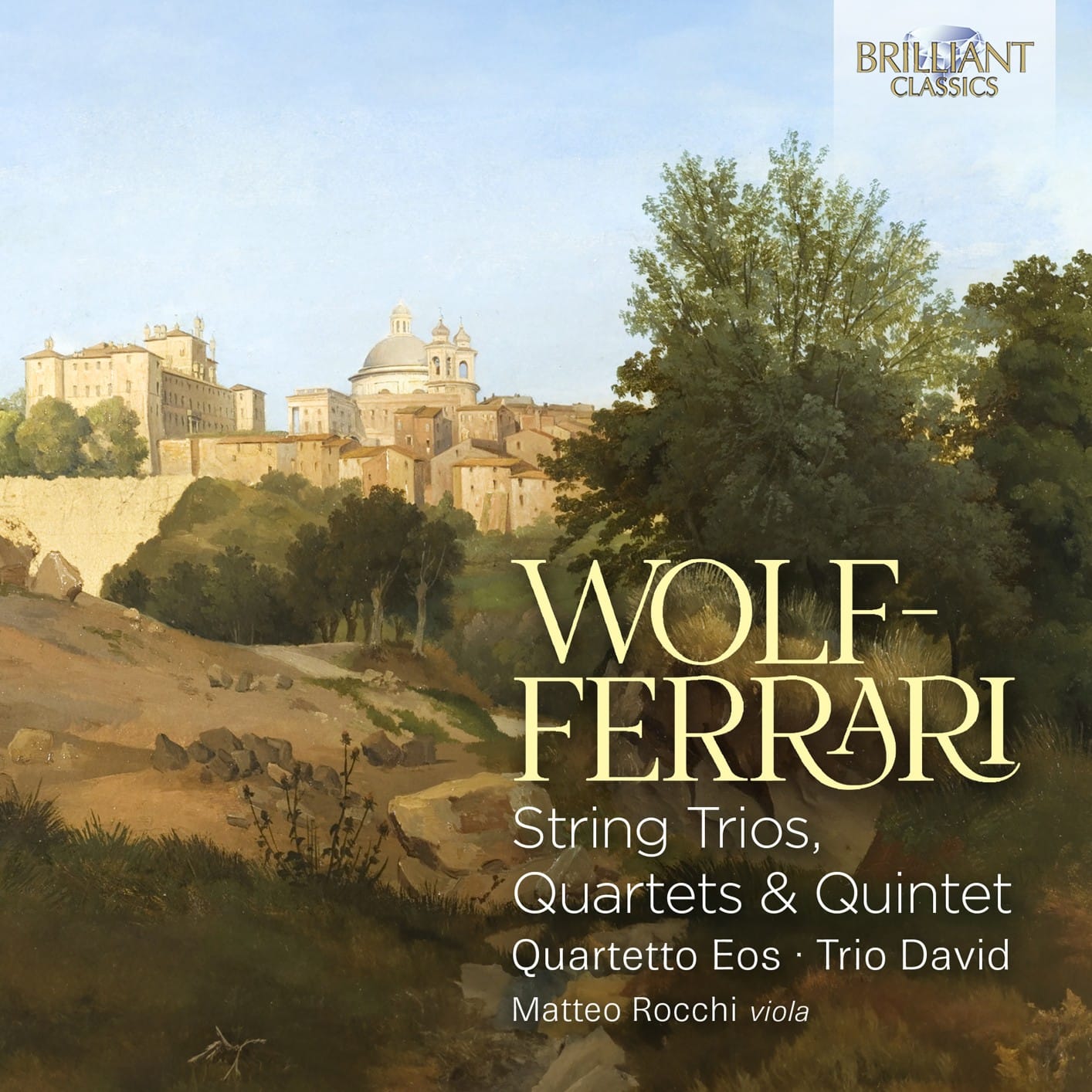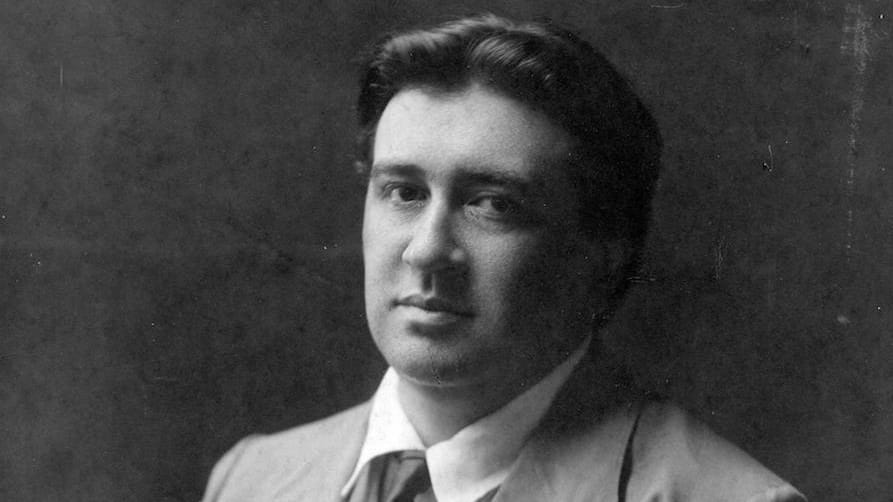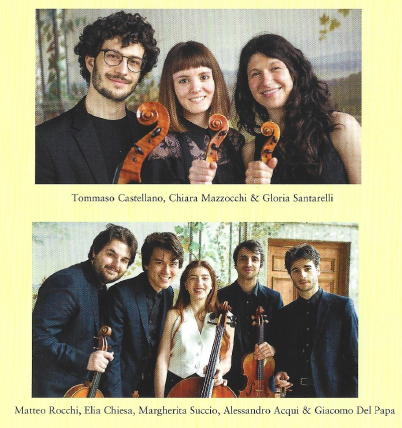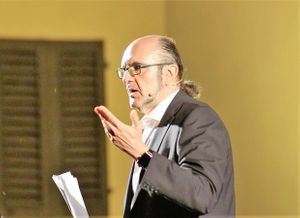The longstanding difficulty and suspicion surrounding the music of the Venetian composer Ermanno Wolf‑Ferrari—even in the face of a somewhat diluted “Wolf‑Ferrari Renaissance” that has emerged in recent decades—stem chiefly from the fact that his artistic sensibility and cultural identity were compelled to reckon with his dual family heritage: a Bavarian father and a Venetian mother. This bi‑cultural inheritance fell upon an exceedingly delicate and awkward historical stage. By the time the First World War broke out, Wolf‑Ferrari was already thirty‑nine and enjoyed a solid reputation both in Italy and abroad; yet the conflict pitted “his” two countries against one another. The situation grew even more fraught in the ensuing years, when Italy and Germany alike became arenas of dictatorial conquest—fascism on one side and Nazism on the other—each regime seeking to appropriate his work in terms of aesthetic, stylistic, and ideological significance (a co‑optation made all the more complex by certain choices Wolf‑Ferrari himself had made).
Nonetheless, there is no doubt that the singular qualities of his music—utterly unique thanks to the dual cultural and artistic training he received from the Germanic tradition and the Italian lineage (his 1895 decision to adopt the double surname “Wolf‑Ferrari” to celebrate his bicultural identity speaks volumes)—bestowed upon him a rare versatility, capable of fusing Teutonic rigor with the pronounced melodic flair characteristic of Italian melodrama. After all, in the late nineteenth century the European musical scene was dominated by two distinct poles: on the one hand, Italian verismo, marked by its intense emotional and dramatic passions; on the other, the avant‑garde of France and the German‑language sphere (particularly in Vienna), in search of new sonorities. It is therefore understandable that Wolf‑Ferrari remained, so to speak, repelled by the gravitational pull of either camp, eschewing both the exaggerated operatic realism of Italy and the experimental thrusts of Austro‑German post‑Wagnerism, remaining steadfast to a strict ideal of classicism. Thus, his choice to embrace clear, linear musical forms positioned him as an alternative to the vicious circle of pure innovation and unchecked emotionalism in which he did not recognize himself. By contrast, his undisputed reference—never renounced—was late‑eighteenth‑century Vienna, from Haydn through Mozart to Beethoven, which he paired with the Italian “bel canto” to create, not only in his operatic works but across his entire output, sound architectures that are lucid and finely wrought.

If anything, a streak of dramatic instability, of reconsideration, of existential doubt—which might not be sought in his stage works such as Il segreto di Susanna (1909) and I gioielli della Madonna (1911) (for their plots are often light and sophisticated, reflecting a subtle wit and a predilection for character drama over tragic melodrama—hence, in Italy, although admired by connoisseurs, his operatic masterpieces drew criticism from musical nationalists who judged them too far removed from popular taste, cementing his status as an outsider on the domestic scene)—can instead be found in certain of his instrumental pages, above all in his chamber music.
Accordingly, the members of the Eos Quartet (joined by violist Matteo Rocchi) and the David Trio were wise to record, on two discs for Brilliant Classics, the compositions the Venetian composer dedicated to chamber music for strings: the String Quartet in E minor, Op. 23, and the String Quintet in C major, Op. 24, as well as the unpublished String Quartet in A minor (1894), the String Trio in B minor (also 1894), the String Trio in C minor, and the unpublished String Trio in A minor, Op. 32 (composed in 1945).
Beginning with the second disc, devoted to the Trios: the Trio in B minor for violin, viola, and cello was composed by Wolf‑Ferrari in Munich in 1894, during his studies at the local Conservatory, and is therefore entirely a youthful work. This recording was made possible by the research of guitarist and musicologist Luca Incerti, who prepared the score on the basis of the manuscript held at the Bayerische Staatsbibliothek in Munich (Mus. ms. 21366). The piece is cast in three movements—Allegro, Larghetto, and Scherzo (Allegro vivace). It is clearly the work of an eighteen‑year‑old, yet one with remarkably clear ideas, especially in his ability to construct a melody that makes a strong impression on the listener. Of the three movements, the central Larghetto is by far the most intriguing and successful: here, the evocative unfolding of the main theme is suddenly jolted by the eruption of a disruptive motif, before the musical flow calmly returns to its opening tranquillity.
The Trio in C minor for violin, viola, and cello—also prepared by Luca Incerti from the manuscript at the Bayerische Staatsbibliothek (Mus. ms. 23142‑1)—constitutes in part a reworking and further development of the B minor Trio, since its first two movements (Allegro and Larghetto) are identical to those of the earlier work. Only the key changes, from B minor to C minor; the sole innovations appear in the final two movements, the Scherzo: Allegro molto, and the Finale, Adagio molto. The Scherzo already reveals, in embryo, one of Wolf‑Ferrari’s “hallmarks”: a serenely classical mood with a rustic flavour, summed up in a concentration of delicate refinement. The concluding Adagio molto, by contrast, serves as a display of contrapuntal skill: after a mournful pianissimo opening, Wolf‑Ferrari demonstrates his knack for shaping and deploying counterpoint, passing the theme from the highest‑register string instrument to the lowest, in a manner that, in a certain sense, pays homage to the great Cantor.

The consummation of the string‑trio genre in Wolf‑Ferrari’s output is, of course, his final contribution: the Trio in A minor, Op. 32, written in 1945, just three years before his death. This Trio not only reveals the craftsmanship of a composer at the height of his maturity, but also serves as the litmus test for the anguish, bitterness, and existential bewilderment that beset him in the waning days of the Second World War, when he was forced to witness the disintegration of the two “homelands” to whose cultures and arts he had always felt beholden. It is no accident that this chamber‑music page conveys a sense of a beauty corrupted—stained by history and human cruelty. One need only attend to the first movement, Allegro moderato, which opens with a restless first theme introduced by the cello and taken up by the violin, followed by a heartfelt chorale‑like second theme, to sense the instability undermining the entire musical flow—an instability made all the more palpable at the movement’s close by the instruments’ eerie tremolos. The sole oasis of contemplative calm occurs in the second movement, a Pastorale marked Andante tranquillo, while the Finale, Allegro, remains deliberately ambiguous in character, oscillating between bright, almost ironic passages and those that revive the dark mood of the opening movement, again underscored by the three instruments’ tremolos.
The first of the two discs, by contrast, is devoted to his two string quartets and his string quintet. Rather than following the recorded track order, these works are presented chronologically. The earliest is the String Quartet in A minor for two violins, viola, and cello, composed in 1894 and—according to the inscription on the manuscript’s title page—dedicated “to the Most Illustrious Professor Ludwig Abel,” the German violinist, composer, and director who taught at the Munich Musikschule during Wolf‑Ferrari’s studies. Once again, Luca Incerti prepared the edition from the manuscript preserved at the Bayerische Staatsbibliothek in Munich (Mus. ms. 23144‑2). The Quartet unfolds in four movements—Allegro moderato, Adagio non troppo, Allegro vivacissimo, and Allegro assai—and though youthful and at times ingenuous, already bears the imprint of the tradition that melded classicism with romantic expressivity. This is especially evident in the slow movement, where the lyrical line collides with moments of heightened drama.
By contrast, the String Quartet in E minor—which unfolds in the movements Allegro, Andante cantabile, Capriccio (Allegro pesante), and Allegro—is a work of maturity, even though its exact date of composition is unknown (it certainly belongs to Wolf‑Ferrari’s later years), as evidenced by the assured mastery of its writing. Moreover, the refinement and lightness—and a certain brightness—inevitably give way to shadows and obscured thoughts, much as in the Op. 32 Trio of 1945. In the opening Allegro, Wolf‑Ferrari even introduces dissonances that thicken the distorted, fragmentary dimension of the musical discourse. Yet it is equally undeniable that here we witness a compositional process in which the Venetian composer attempts to rethink and propose a possible neoclassicism. This emerges most clearly in the slow movement, poised between a lucid, well‑defined melodic dimension—evocative of a late‑nineteenth‑century aesthetic—and its development, in which a latent emotional tension never allows the music to breathe with complete ease and lightness. The Capriccio that follows, with its constant alternation of tempi, offers another sign of the inner instability that haunted the composer at that point in his life; only in the final Allegro does his characteristic elegance and refinement break through openly, without any apparent shadows.
Finally, the String Quintet in C major, Op. 24—for two violins, two violas, and cello—is again prepared by Luca Incerti, this time from the individual parts published by Musikverlag Thomi‑Berg. Likely the only work Wolf‑Ferrari wrote for this particular ensemble (aside from his youthful 1894 quintet), it was composed in the dark years of the Second World War—precisely in 1942—and is cast in four movements: Allegro assai quasi presto, Larghetto, Prestissimo, and Molto mosso alla breve.

This is nothing short of an enchanting score, crafted with supreme skill and an ability to shape sonic material to perfection. Take, for example, the Larghetto, where the melodic line is brilliantly distributed among the five instruments, creating an almost magical, fully convincing aura; likewise, the virtuosic demands pepper the ensuing Prestissimo, further proof of the Venetian composer’s mature craftsmanship, one that seems to look back to an era when musical gesture heralded genius and stylistic perfection.
The value of this recording project lies not only in the way it fills, in a sense, a gap in Wolf‑Ferrari’s rich and admirable output, but also in offering a moment of undeniable beauty and creative insight. The highly positive result owes much to the readings by the two chamber ensembles (it is worth recalling their names: the David Trio—Tommaso Castellano, Chiara Mazzocchi, and Gloria Santarelli—and the Eos Quartet—Elia Chiesa, Giacomo Del Papa, Alessandro Acqui, and Margherita Succio, who temporarily replaces Silvia Ancarani—with violist Matteo Rocchi joining them for the Quintet). Despite their youth, they deliver an utterly convincing interpretation, able to bring out both the youthful, ingenuous spontaneity and the more mature vein, rich in psychological nuance and emotional tension, thus rightly highlighting the dual‑faced inventiveness of this great Venetian composer.
The sound capture by Roberto Terelle is also of good quality, although the dynamics lack a certain vigorous energy, which slightly detracts from the reconstruction of the sonic stage: the sound presented by the two chamber ensembles, positioned at a respectable depth in physical space, never fully blossoms in height and breadth. Both tonal balance and detail are handled satisfactorily.
Andrea Bedetti
Ermanno Wolf‑Ferrari – String Trios, Quartets & Quintet
Quartetto Eos – Trio David
2 CD Brilliant Classics 96816
Artistic rating 4,5/5
Technical rating 3,5/5



